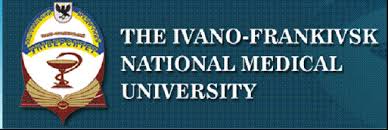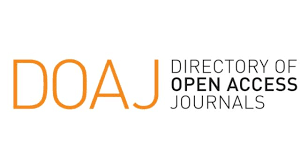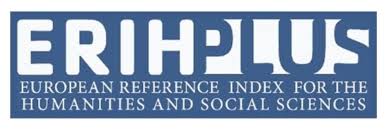PECULIARITIES OF THE COURSE AND TREATMENT OF GASTROESOPHAGEAL REFLUX DISEASE IN PATIENTS WITH SYNDROME OF UNDIFFERENTIATED CONNECTIVE TISSUE DYSPLASIA. (SYSTEMATIC LITERATURE REVIEW)
DOI:
https://doi.org/10.32437/MHGCJ-2019(0).70Keywords:
gastroesophageal reflux disease, syndrome of undifferentiated connective tissue dysplasia, diagnosis, ghrelin, matrix metalloproteinase-9, prostaglandins E 2 and F2α, , oxyproline, micro- and macronutrients, treatmentAbstract
Introduction: One of the features of modern clinical medicine is that the diseases lose their mononosological character and more often have a comorbid course. Chronic pathology of the gastrointestinal tract (GIT) combined with syndrome of undifferentiated connective tissue dysplasia (UCTD) occupies a special place. And although scientists have increasingly investigated the relationship between gastroesophageal reflux disease (GERD) and UCTD syndrome in recent years, but the available scientific literature provides an extremely limited amount of material directly on the subject.
Aim: To analyze literature data on the features of the course and treatment of gastroesophageal reflux disease in patients with syndrome of undifferentiated connective tissue dysplasia.
Methods: A systematic literature search of Web of Science Core Collection, MEDLINE, PubMed, EMBASE, and the Cochrane Library until December 2019 with keywords "gastroesophageal reflux disease", "syndrome of undifferentiated connective tissue dysplasia", "ghrelin", "matrix metalloproteinase-9", "prostaglandin E2", "prostoglandin F2?", "oxyproline", "micro- and macronutrients", was performed
Results: According to scientific data, the digestive system is the second system of the body according to the frequency of involvement in the dysplastic process after the cardiovascular system (Bodolay E. et.al., 2003). The high degree of collagenation of the digestive system allows us to expect a variety of manifestations of UCTD. Dysplastic changes in the gastrointestinal tract include insufficiency of cardia, diaphragmatic hernia, ptosis of abdominal organs, anomalies of shape and structure of esophagus, stomach, duodenum, esophageal diverticula and various departments of intestines. In this case, the presence of UCTD syndrome causes certain features of metabolism, adaptation and existence of the organism in conditions of defective collagen (Nica A. E et.al., 2016).
From a clinical point of view, UCTD is a heterogeneous and polymorphic condition, which underlie various defects in the formation of collagen and elastin fibers as a result of genetic predisposition, which lead to disorders at the tissue and organism levels (Chemodanov V. and others. , 2018). Acording to the science data, assignment of patients to the UCTD group is possible if its manifestations are not specific for such connective tissue diseases as rheumatoid arthritis (RA), scleroderma, systemic vasculitis, myositis, systemic lupus erythematosus, Sjogren's syndrome (Antunes M. et al., 2019.) The complexity of the morphology and the variety of connective tissue functions also determine the prevalence of visceral manifestations of UCTD. Moreover, as the phenotypic signs UCTD increases, the likelihood of detecting pathological changes in the internal organs increases. The degree of damage to the internal organs and usually determines the severity of the clinical picture and individual prognosis. (Usenko O. Yu et al., 2017; Denaxas K. et.al., 2018).
GERD is a multifactorial disease in the occurrence of which play a role as a support (stress, obesity, smoking, intake of some medications, nutritional features) and determining factors that include cardiac insufficiency, gastric reflux and resistance of the mucous membrane of the esophagus due to a decrease in its clearance. The risk of developing GERD also increases with generalized or regional disruption of connective tissue structure that is widespread in the population (Kadurina T. I. et.al., 2010). Cardia insufficiency is one of the manifestations of UCTD, and there is a direct relationship between the degree of UCTD and the incidence of gastroesophageal reflux (Denaxas K. et.al., 2018).
On the background of UCTD, in combination with gastroesophageal refluxes (GER), a pronounced inflammation of the mucous membrane of the lower third of the esophagus was more often found. Frequent GER may affect the state of the autonomic nervous system through the nerve and anatomical ligaments of the esophagus and deepen connective tissue dysfunction. In some works, it was found, that on the background of UCTD syndrome, the symptoms inherent in GERD were detected more often than in patients without signs of the first. In particular, these patients complained more frequently of heartburn, severe chest pain, more frequent gastroesophageal and duodenogastric refluxes and erosion of the mucous membrane of the lower third of the esophagus. Thus, as can be seen from the above data, conditions for such important pathogenetic links of the development of GERD, such as impaired function of the lower esophageal sphincter (LES), reduction of the barrier capacity of the mucous membrane of the esophagus, an increase in the number of acid and mixed refluxes. (Kamataki A. et.al., 2015; Baia X. et. Al., 2019). The exclusive role of PGE2 in maintaining mucosal integrity, preventing acid reflux, and esophagitis by modulating various gastrointestinal functions has been scientifically validated (Baia X. et al., 2019). At the same time, in the available literature, we have not identified any studies examining the role of different classes of prostaglandins in protecting mucous membrane of the esophagus in UCTD.
Peptide hormone such as ghrelin has a pronounced effect on gastric motility. This hormone is mainly released from the stomach and has many physiological actions, such as stimulating food intake, regulating the motility of the gastrointestinal tract, stimulating the release of growth hormone, lowering blood pressure and regulating the complex process of energy metabolism, through the correction of hunger signals. As ghrelin stimulates gastric motility and accelerates gastric emptying, the effect of this intestinal hormone on GIT motility is being actively studied, in particular in pathological GER (Kitazawa T. et.al., 2018). At the same time, the role of ghrelin in GERD as an independent disease and its combination with UCTD has not been studied.
Involvement of the esophagus in the pathological process of UCTD is also explained by the accumulation of the extracellular matrix in its walls, remodeling and degradation of collagen and other compounds, and the key regulators of these processes, both under physiological and pathological conditions are matrix metalloproteinases (???’s) (Chen et al., 2009). The cofactors of matrix metalloproteinases are micro- and macroelements that are involved in the formation of collagen, giving elasticity to the connective tissue matrix (Ismail AA, 2016). At the same time, the level of micro- macroelements in blood and MMP-9 activity was not studied in patients with GERD on the background of UCTD.
With regard to drug therapy of this combined pathology in adults, in cases of development of GERD on the background of UCTD pathogenetically justified complex therapy has not been developed, which also determines the relevance of this study.
Conclusion: A study of the literature on the comorbidity of GERD and UCTD has shown that variability in clinical pathology markers is not fully reflected in publications on this topic. This complicates early diagnosis, making the right diagnosis at the initial examination of the patient. The clinic for such combined pathology remains poorly understood. In this regard, the treatment of this pathology is not prophylactic, aimed at preventing possible complications, but remains symptomatic. Therefore, the next step in this study will be: to study the frequency of combination of GERD with phenotypic and biochemical markers of UCTD syndrome; establishment of features of clinical manifestations, changes in gastric motility, indicators of daily pH-metry, condition of the mucous membrane of the lower third of the esophagus in patients with GERD in combination with syndrome UCTD









 E-mail us: viktor.vus@mhgcj.org
E-mail us: viktor.vus@mhgcj.org 